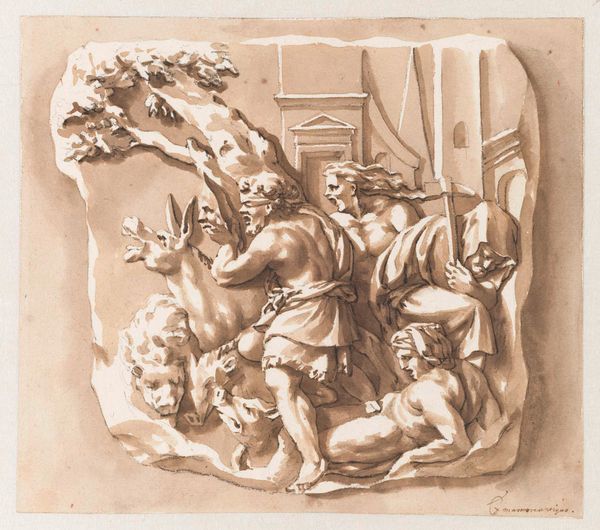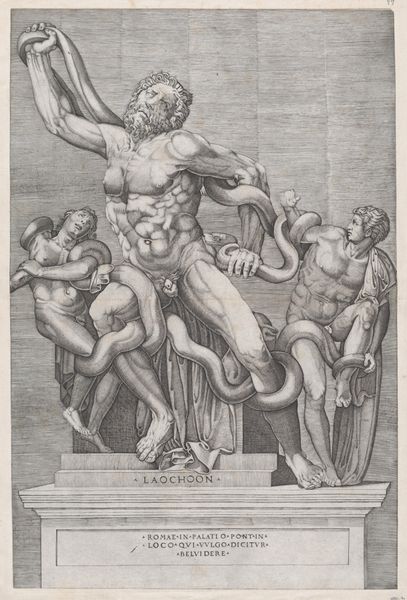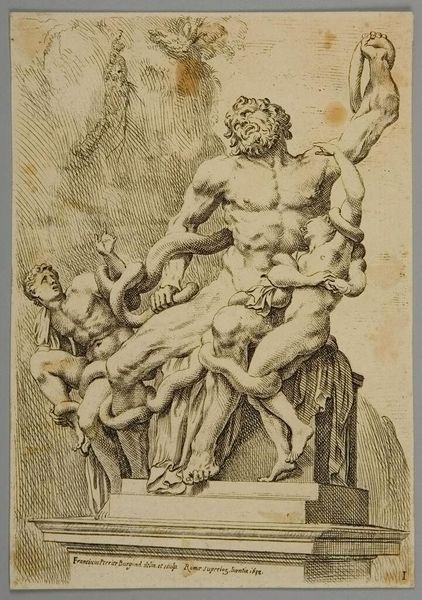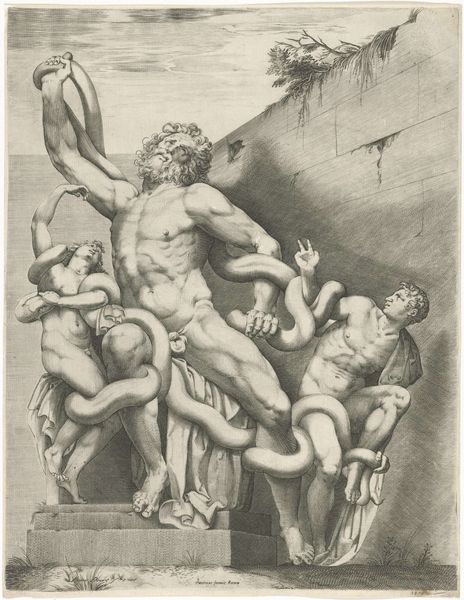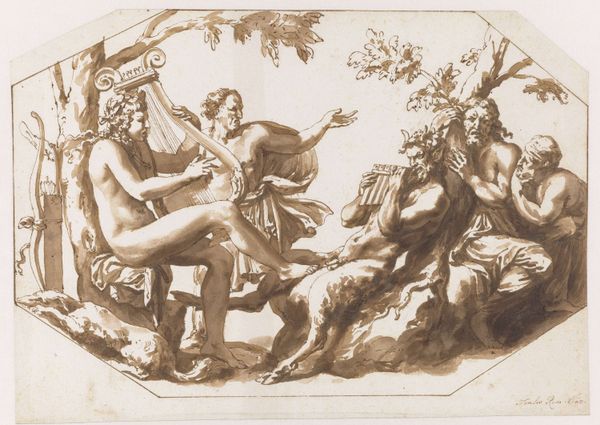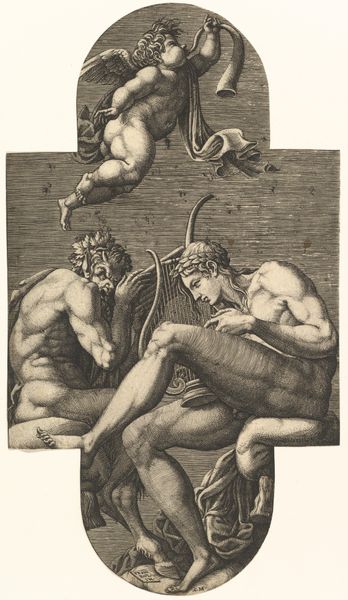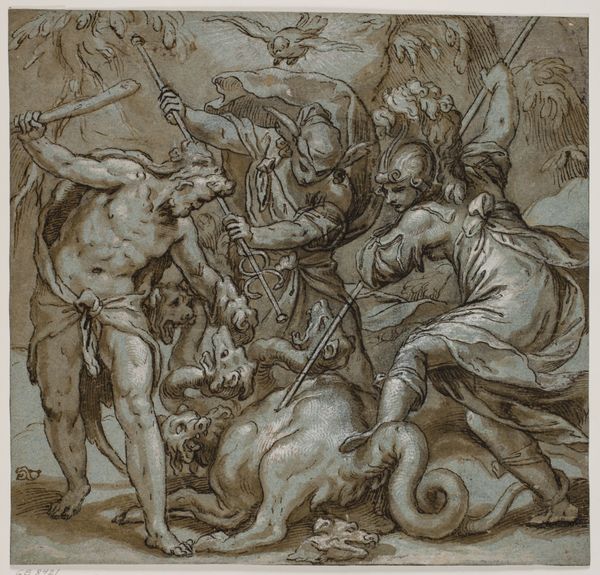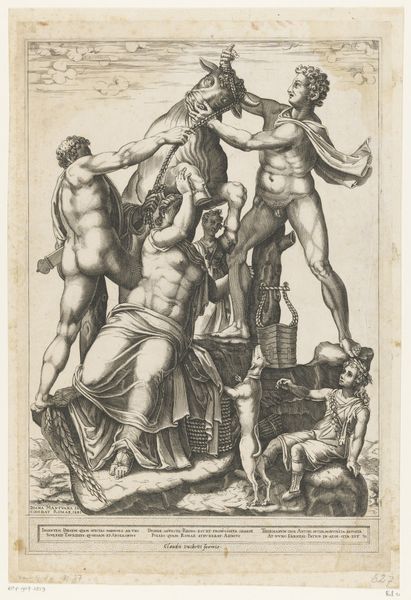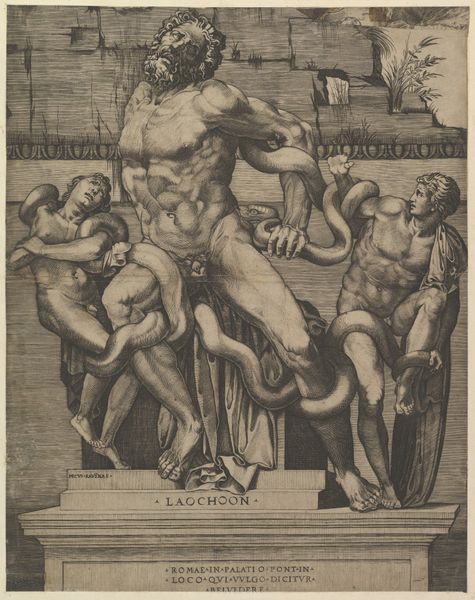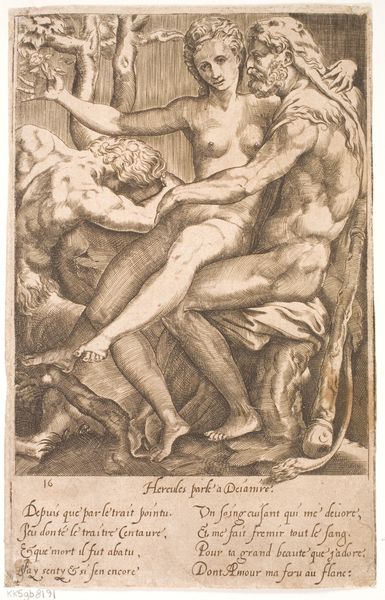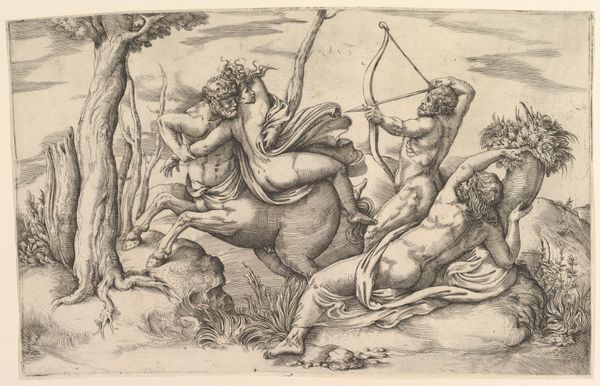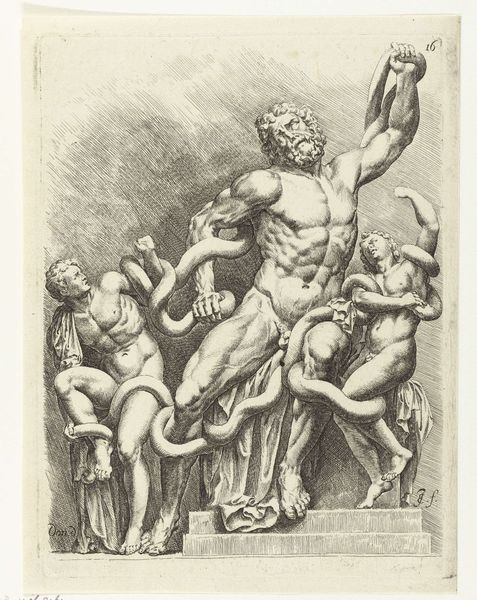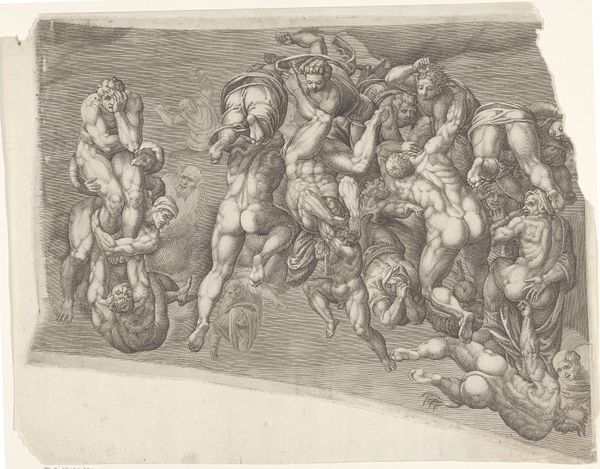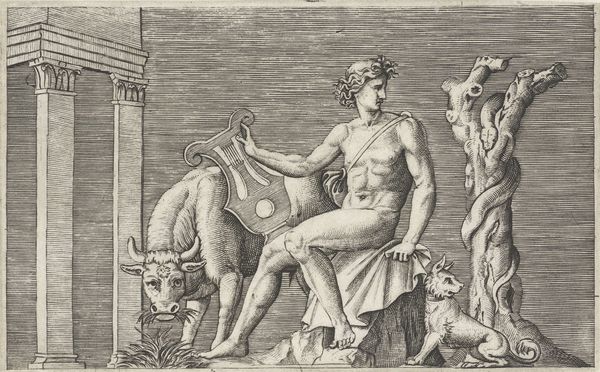
drawing, paper, ink
#
drawing
#
allegory
#
baroque
#
charcoal drawing
#
figuration
#
paper
#
ink
#
academic-art
#
nude
Dimensions: height 179 mm, width 228 mm
Copyright: Rijks Museum: Open Domain
Jan de Bisschop created this washed brush drawing, "Sater, gedragen door twee putti en een jongeman" in the 17th century. The drawing depicts a sater, a mythological creature often associated with revelry, being carried by two putti, cherubic figures, and a young man. Consider the implications of this depiction during the Dutch Golden Age, a period marked by both religious conservatism and burgeoning artistic innovation. Jan de Bisschop's choice to represent a sater, a figure linked to pagan rituals, may have been a deliberate challenge to prevailing social norms, pushing the boundaries of acceptable subject matter in art. What does it mean to see the sater, typically a figure of wild abandon, rendered dependent and in need of support? How does this affect our understanding of power, vulnerability, and the narratives we construct around masculinity? Perhaps de Bisschop is inviting us to consider alternative narratives of masculinity, ones that embrace vulnerability and interdependence.
Comments
No comments
Be the first to comment and join the conversation on the ultimate creative platform.
